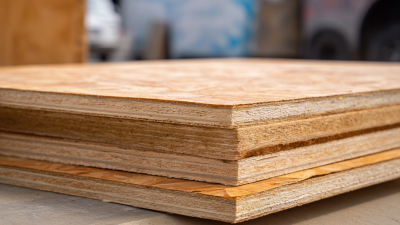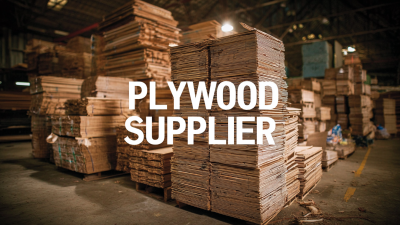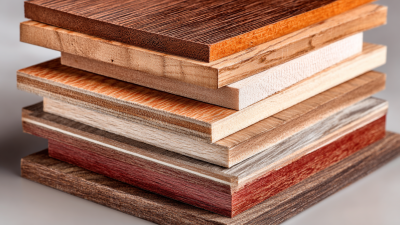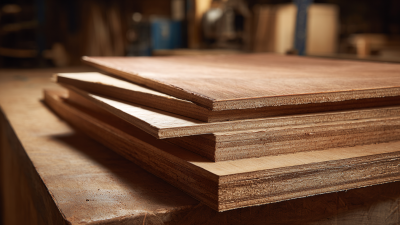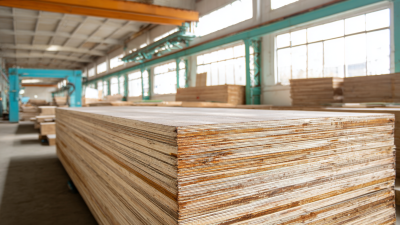Structural Plywood has emerged as a pivotal material in modern construction, appreciated for its versatility, strength, and sustainability. According to a report by the Wood Products Council, the demand for structural plywood has increased by over 20% in recent years, driven by its application in residential, commercial, and industrial projects. Its ability to withstand significant loads while retaining lightweight properties makes it a preferred choice for architects and builders. Additionally, the International Forestry Resources and Institutions (IFRI) highlights that structural plywood is not only cost-effective but also contributes to environmentally friendly building practices, utilizing renewable resources. As the construction industry continues to evolve, understanding the various types and applications of Structural Plywood is essential for maximizing its benefits in creating robust and resilient structures.

Structural plywood is a vital material in modern construction, offering a unique blend of versatility and strength. It is primarily made from thin layers of wood veneer that are glued together, which enhances its durability and minimizes warping. The composition of structural plywood varies based on the intended application, with common types including plywood made from hardwoods, softwoods, or a mix of both. According to the Engineered Wood Association, structural plywood can withstand significant loads, with bending strength exceeding 33,000 psi in some applications, making it a popular choice for flooring, roofing, and wall sheathing.
Different grades of structural plywood are categorized based on their appearance, durability, and structural performance. For instance, plywood rated as "CDX" is often used in construction for its balance between cost and strength, with the "C" side being of a lower grade, allowing for some knots or imperfections, while the "D" side is designed for more structural integrity. Understanding these grades and their specifications is essential for architects and builders to select the right type for their projects.
Tip: Always check for American Plywood Association (APA) certification on structural plywood products to ensure quality and performance standards.
Tip: Consider the climate and environmental conditions of your construction site when selecting plywood grades, as moisture-resistance ratings can significantly impact the longevity of your structure.
Structural plywood offers a myriad of key benefits that make it an invaluable material in modern building projects. One of the primary advantages is its outstanding strength-to-weight ratio, allowing it to support substantial loads while remaining lightweight and easy to handle. This characteristic not only reduces transportation costs but also simplifies installation, facilitating quicker project timelines. Additionally, plywood’s inherent flexibility allows it to be used in various structural applications, ranging from walls and roofs to flooring systems, adapting seamlessly to diverse architectural designs.
Another significant benefit lies in plywood's environmental sustainability. Often sourced from renewable wood resources, it plays a crucial role in sustainable construction practices. Modern manufacturing techniques also ensure that plywood products meet stringent safety and performance standards while minimizing waste. Furthermore, the material's excellent durability and resistance to warping, cracking, and mold contribute to the longevity of structures, making it a cost-effective choice over time. By understanding these advantages, architects and builders can leverage the versatile nature of structural plywood to create innovative, resilient, and eco-friendly buildings.
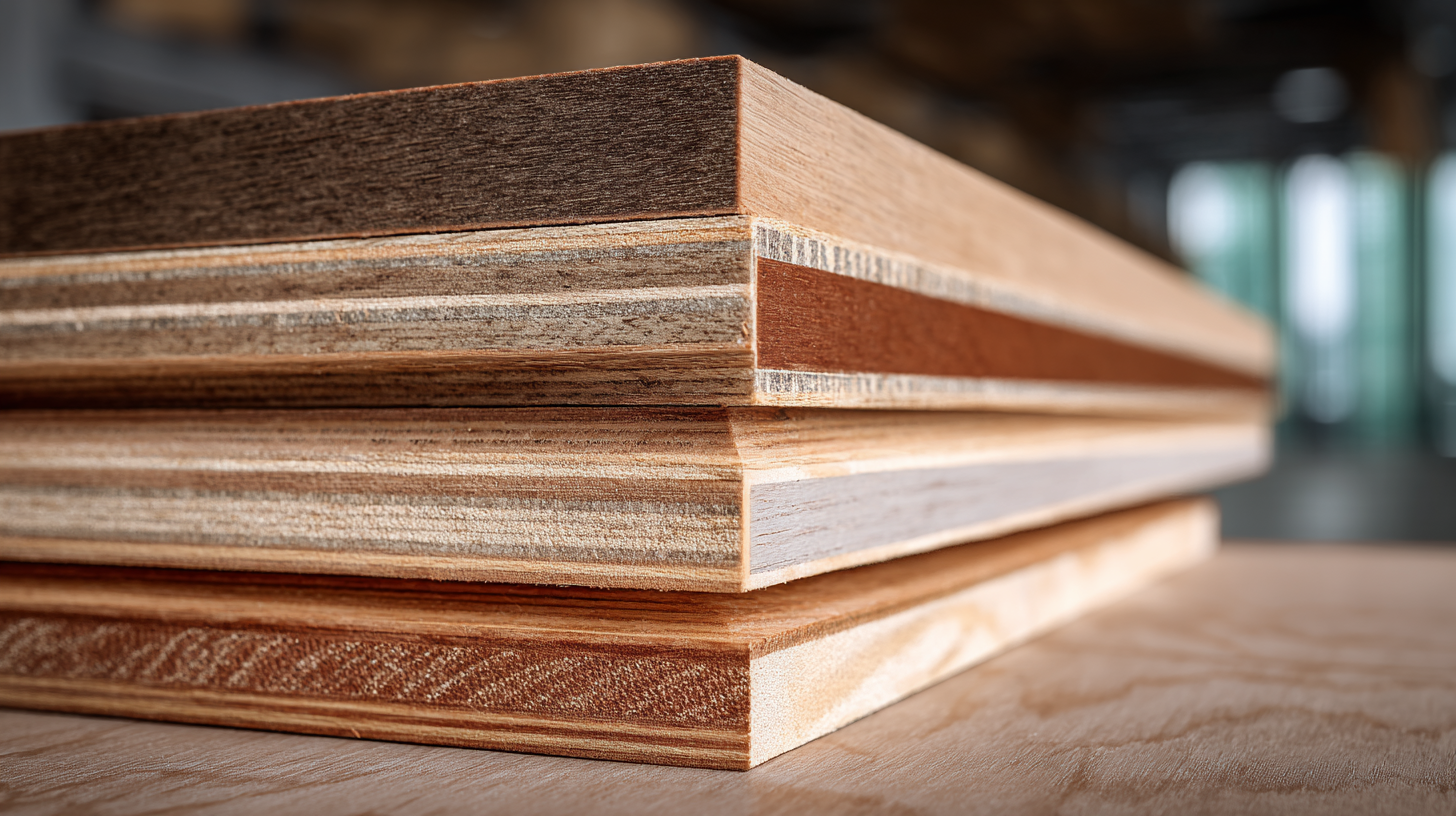
When sourcing and selecting quality plywood for modern construction, it's essential to adhere to industry standards and specifications. According to the APA – The Engineered Wood Association, plywood must meet specific grading criteria to ensure its structural integrity and performance in building applications. Plywood graded under the appropriate standards not only offers strength and durability but also resists warping and delamination, which are critical factors in maintaining the longevity of construction projects.
Moreover, considering the source of the plywood is vital. The Forest Stewardship Council (FSC) reports that approximately 13% of the world’s forests are certified as sustainably managed. Opting for FSC-certified plywood not only supports responsible forestry practices but also enhances the overall sustainability of the construction project. Additionally, engineers and architects should pay attention to the thickness and the type of adhesive used in the plywood, as these factors greatly influence performance under varying environmental conditions. By prioritizing these selection techniques, builders can ensure they are using high-quality plywood that meets the demands of contemporary construction.

Structural plywood has gained popularity in modern construction due to its remarkable strength and versatility. However, the installation and maintenance of plywood are key factors in optimizing its performance in building applications. According to the American Plywood Association, when properly installed, structural plywood can provide shear resistance and contribute significantly to a building's overall energy efficiency, reducing heating and cooling costs by up to 20%.
Best practices for plywood installation emphasize the importance of moisture control and securing proper fasteners. It is recommended that builders utilize exterior grade plywood for applications exposed to moisture, ensuring longevity and durability. Furthermore, adhering to building codes and guidelines such as those set by the International Code Council can enhance structural integrity. Regular maintenance checks, including inspections for signs of rot, water damage, or insect infestation, will not only extend the lifespan of the plywood but also maintain the safety and functionality of the structure.
Incorporating the right sealants and treatments can effectively protect plywood from environmental stressors. A study from the Forest Products Laboratory indicates that treated plywood can last several decades longer than untreated variants, highlighting the significance of proactive maintenance measures in construction. By following these best practices, construction professionals can leverage the full potential of structural plywood, ensuring robust and lasting infrastructure.
Structural plywood has emerged as a fundamental material in contemporary architecture, showcasing its diverse applications across various building types. According to the American Plywood Association, structural plywood is engineered for durability, versatility, and strength, making it suitable for both residential and commercial projects. One notable application is in the construction of high-rise buildings, where cross-laminated timber (CLT) made from plywood is increasingly utilized due to its lightweight nature combined with high strength-to-weight ratios. This innovation not only enhances structural integrity but also contributes to sustainability by reducing the carbon footprint associated with traditional concrete and steel structures.
Additionally, the innovative use of structural plywood extends to creative designs in interior spaces and acoustic panels. Reports from the Wood Products Council indicate that plywood’s unique aesthetic qualities, along with its ability to maintain sound insulation, are driving its adoption in public spaces like schools and auditoriums. The flexibility of plywood allows architects and designers to experiment with shapes and forms that were previously limited by conventional materials. With the global structural plywood market projected to grow by 6% annually, it is evident that this material is not just a trend but a cornerstone in the evolution of modern architectural practices.
